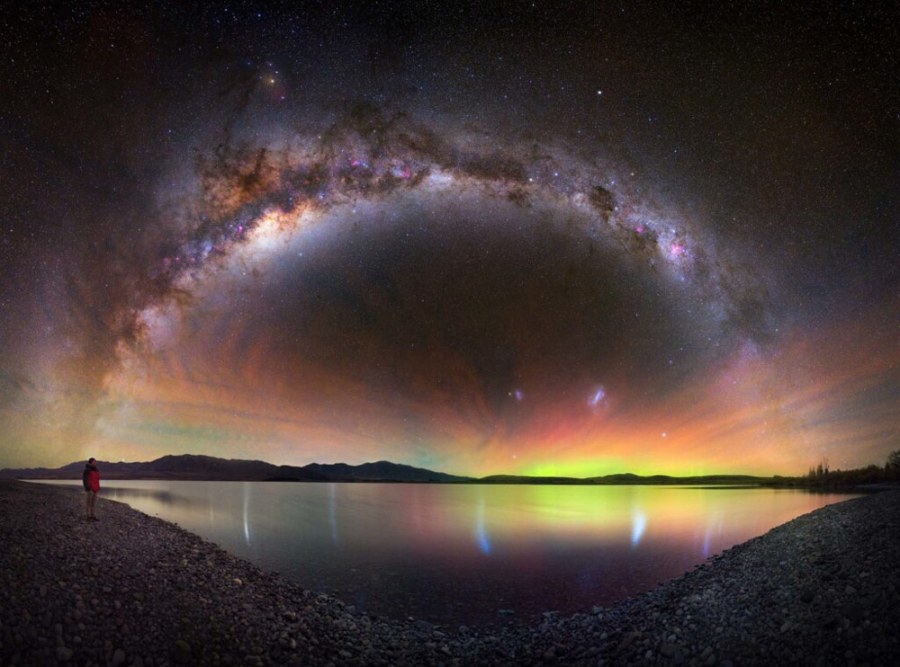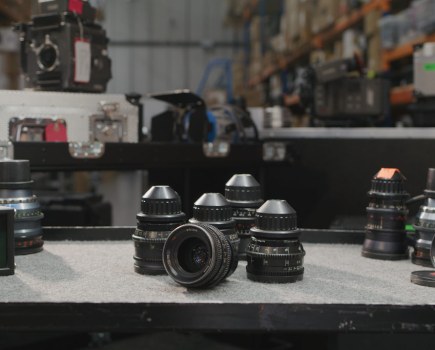Adding stars and the milky way to your images is a great way to transform your landscape photography, night photography and astrophotography, and you can see some fantastic examples by the winners of the latest Milky Way Photographer of the Year competition.
The competition is organised by Capture the Atlas, a travel and photography blog, and this year’s 25 winning milky way shots were selected from over 3,000 entries from 16 countries. ‘Modern cameras can capture vibrant details and colours in the night sky beyond what our eyes can see,’ said the organisers. ‘However, what really matters in any great image is the photographer behind the camera, who provides the idea, plan, and creativity to bring the image to life.’
Below are our top 10 favourites. In the meantime, don’t miss our guides to the best cameras for astrophotography and night landscape photography. We’ve also got an essential guide to manual focus, which is an important skill in this kind of photography.
Our 10 favourite images from Milky Way Photographer of the Year
1. Cafayate star factory, by Gonzalo Santile
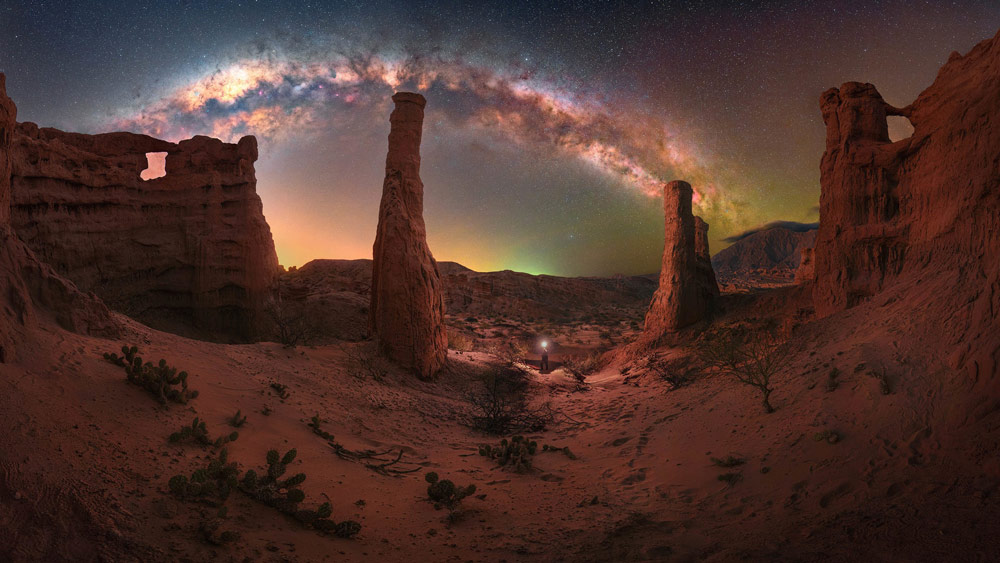
Astro-modified Sony A7R III. Sky: F/2.8, 120 seconds, ISO 1600. Foreground: F/6.0, 20 seconds, ISO 800
‘To capture this shot, I arrived before the blue hour and as soon as the first stars appeared, with some light still shining on the landscape, I took the images for the foreground,’ Gonzalo, who took the shot in Argentina, explained. ‘After that, when it was completely dark, I shot the vertical photos of the sky. As the milky way was already very low at that time of the year I had to hurry as I only had one chance to get the images of the sky once it got dark. I aligned my tracker and the action began.’
2. Night under the Baobab Trees, by Steffi Lieberman
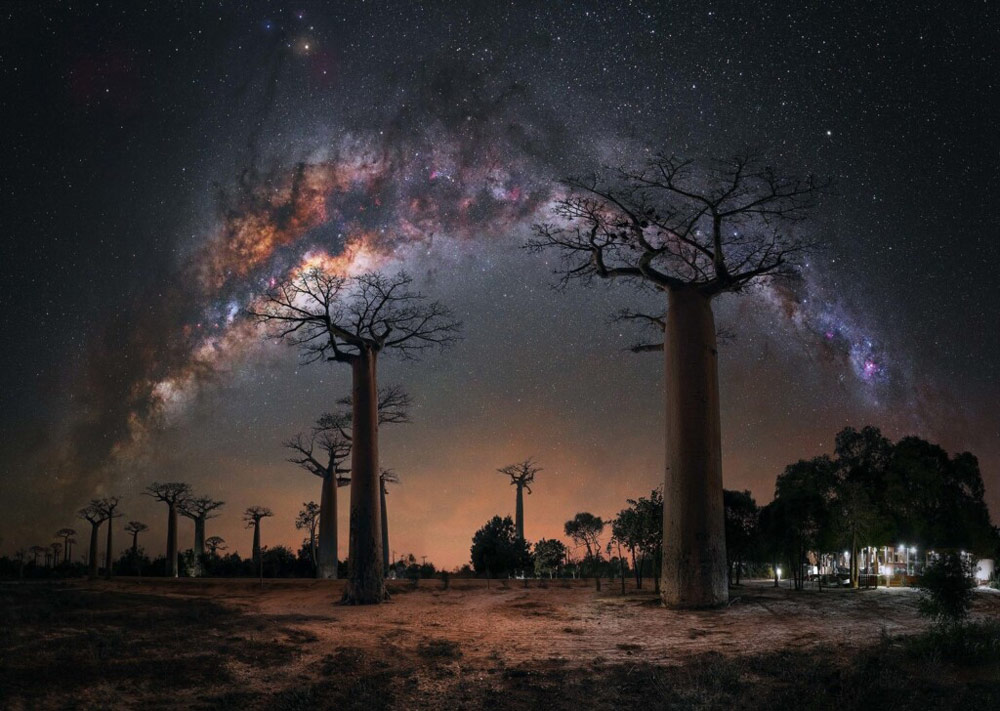
Astro-modified Sony A7R III. Sky: F/2.8, 120 seconds, ISO 1600. Foreground: F/6.0, 20 seconds, ISO 800
‘Here you can see the complete milky way arc over the imposing baobabs’ says Steffi, who took the image in Madagascar. ‘This photo means a lot to me, and I can’t even begin to tell you how difficult it was to take it. From the road conditions to the armed security guards protecting you while you take photos, everything about it was an adventure.’
3. South of Home, by Lorenzo Ranieri Tenti
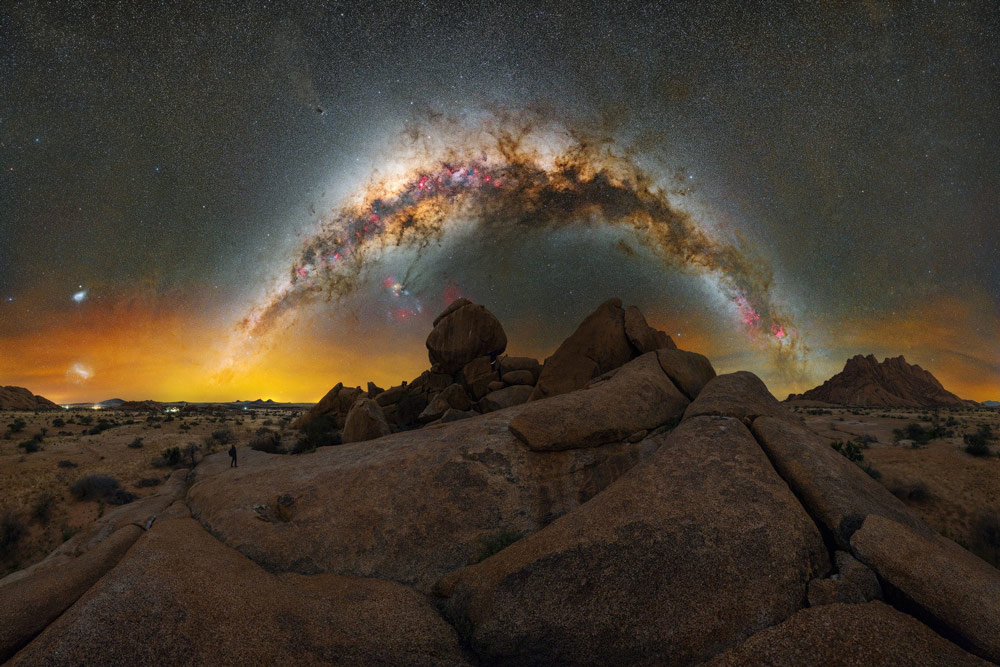
Astro-modified Sony A7S, Sony A7R IV. Sky: 35mm, 30 seconds, F2.8, ISO 6400. Foreground: 20mm, 20 seconds, F2.5, ISO 6400
‘The panoramic photograph captures the breathtaking scene in the Gross Spitzkoppe Nature Reserve in Namibia, where the southern milky way gracefully spans a remarkable formation of smooth granite boulders,’ explains Lorenzo. ‘This area holds a unique charm, with Mount Spitzkoppe being the sole prominent feature for kilometers, majestically rising 700 meters above the endless savannah.’
4. Shapes of Nature, by Uroš Fink
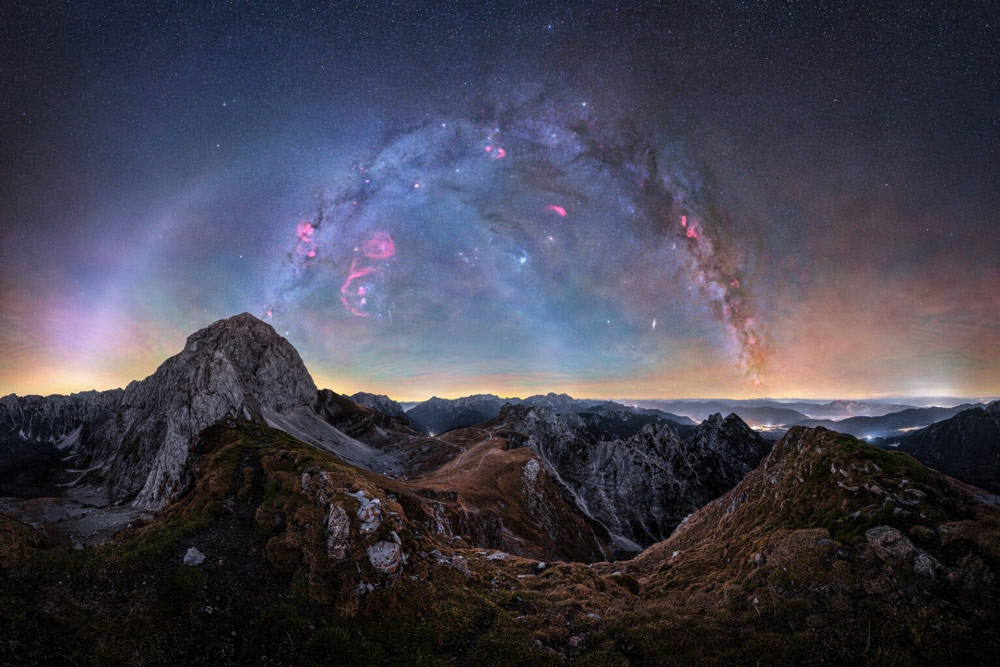
Nikon Z6. Sky: 16 panels x 3 rows, ISO 1000, F2.2, 90 seconds. Foreground: 9 panels, 1 row, ISO 1250, F2, 120 seconds, focus stacked.
‘A double arc of light adorned the Mangart Saddle in the Julian Alps,’ explained Uroš, who took the image in Slovenia. I must confess, staying awake for 30 hours, lugging 30kg of gear, and planning compositions all day was no easy feat,’ he explained. ‘But every effort paid off! In the sky, two arcs of light shine. One represents the winter belt of the milky way, while the other is the soft glow of the approaching sunrise.’
5. The La Palma Astroexperience, by Jakob Sahner

Astro-modified Sony A7S. Sky: 9 panel panorama with 8×30 seconds per panel in RGB and 3 extra images with 15×30 seconds for H-Alpha around the Milky Way core. Foreground: 6 panel panorama with 30 seconds single exposures. All images were taken at F/1.4 and ISO 2000
‘La Palma and the Canary Islands are ideal for astrophotography due to the trade wind clouds that sit at around 1000 meters,’ explains Jakob. ‘Being above these clouds makes it clear enough for capturing images, provided there is no haze or high cirrus clouds. On the first night of the trip, I was exhausted from a long journey and no sleep, but I couldn’t resist going out to capture the clear sky, as it was the first time I’ve experienced this much cloud cover.’
6. Milky Way over Cuenca’s Hoodoos, by Luis Cajete
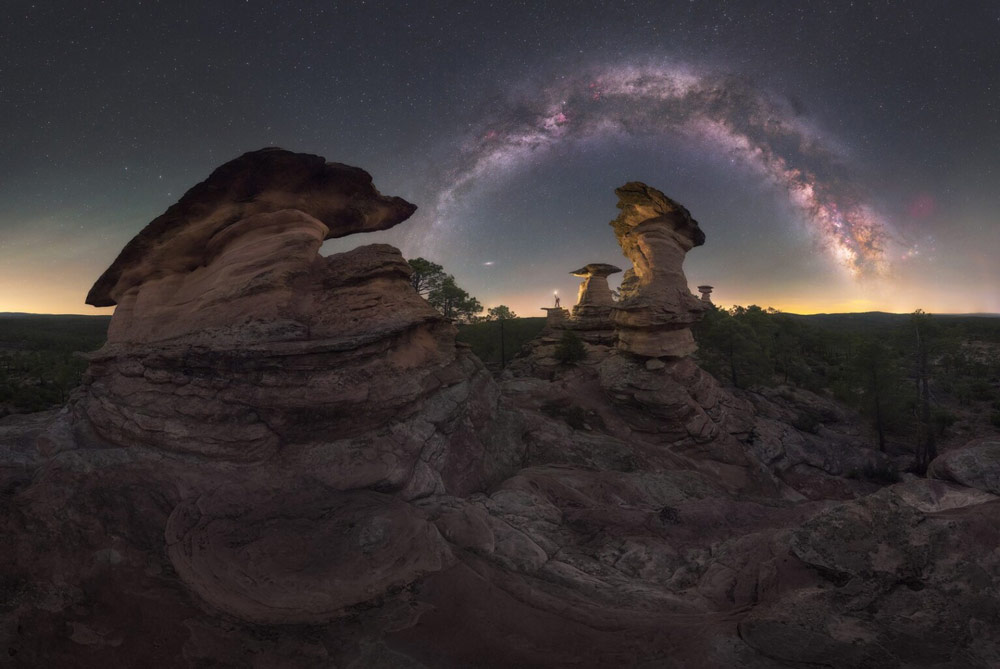
Nikon Z5. Foreground: ISO 6400, F/2.8 120 seconds. Sky: tracked, ISO 640 F2.8 120 seconds
‘Living in a big city, I have always battled against intense light pollution,’ says Luis. ‘That’s why I’ve spent years searching for places where I can truly appreciate the beauty of the stars. Witnessing the arc of the milky way is an absolutely awe-inspiring experience.
Some of Spain’s darkest skies can be found in the Serrania de Cuenca, an area of remarkable geological beauty. In the southern region lies a place where water has carved the landscape, creating intriguing formations and limestone chimneys.’
7. Celestial Radiance, by Tom Rae

Nikon Z7. Five rows of seven images (sky rows were tracked). ISO 2000, F/2.8, 30 seconds
‘As night fell at Mount Tekapo in New Zealand, the autumn sky revealed itself, and I began shooting,’ says Tom. ‘Midway through my milky way panorama, a faint glow appeared on the horizon – my first aurora! What followed was a spectacular light show of flowing beams and vibrant colours.
The image also showcases airglow, a wave-like pattern of red and green caused by ionized molecules in our atmosphere. But the true focus remains the milky way galaxy gracefully spanning the sky, accompanied by the Magellanic Clouds, its smaller satellite galaxies, hovering above the aurora.’
8. The Scenery I Wanted to See,’ by Mitsuhiro Okabe
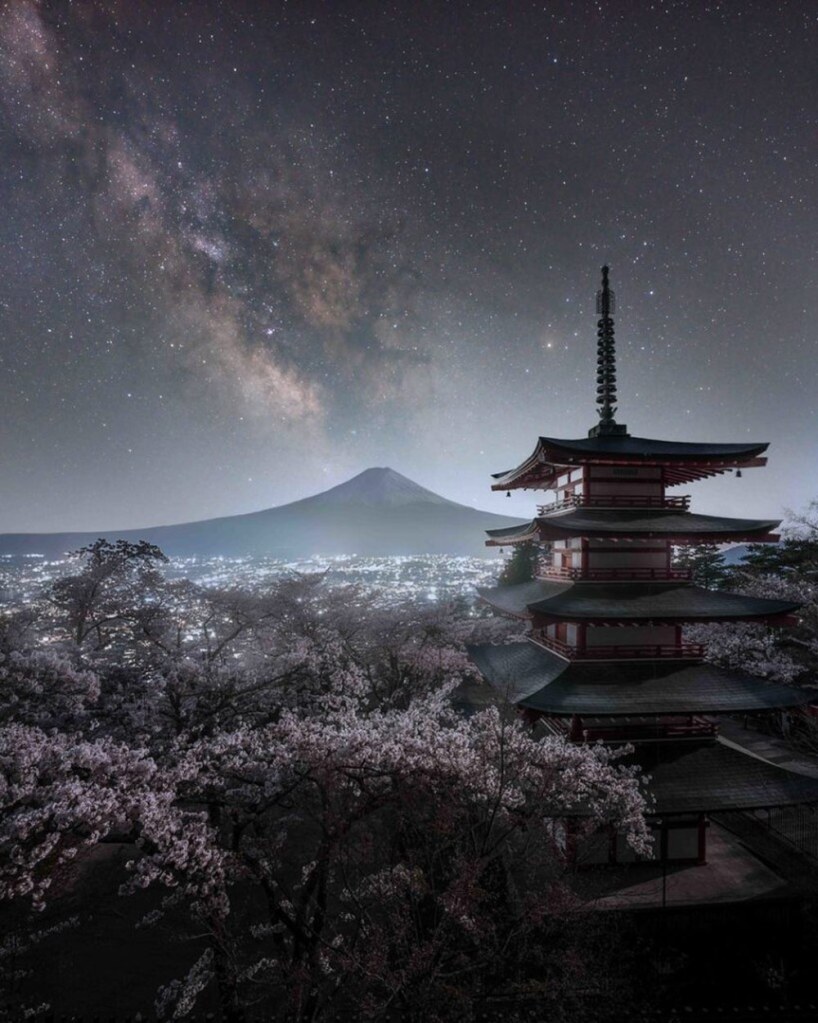
Sony A7R III. Foreground: 14mm, ISO 2000, F/7.1,30 seconds (20 photos to reduce noise). Sky: 14mm, ISO 500, F/5, 20 seconds (40 photos)
‘Mount Fuji, Japan’s iconic symbol, dominates the backdrop of this image, set during cherry blossom season,’ explains Mitsuhiro. ‘Amidst the landscape, you can see a sacred temple dedicated to honoring the spirits of the departed. And there, against the dark canvas of the night sky, the ethereal beauty of the milky way came into view.’
9. Alien Forest, by Marcin Zając
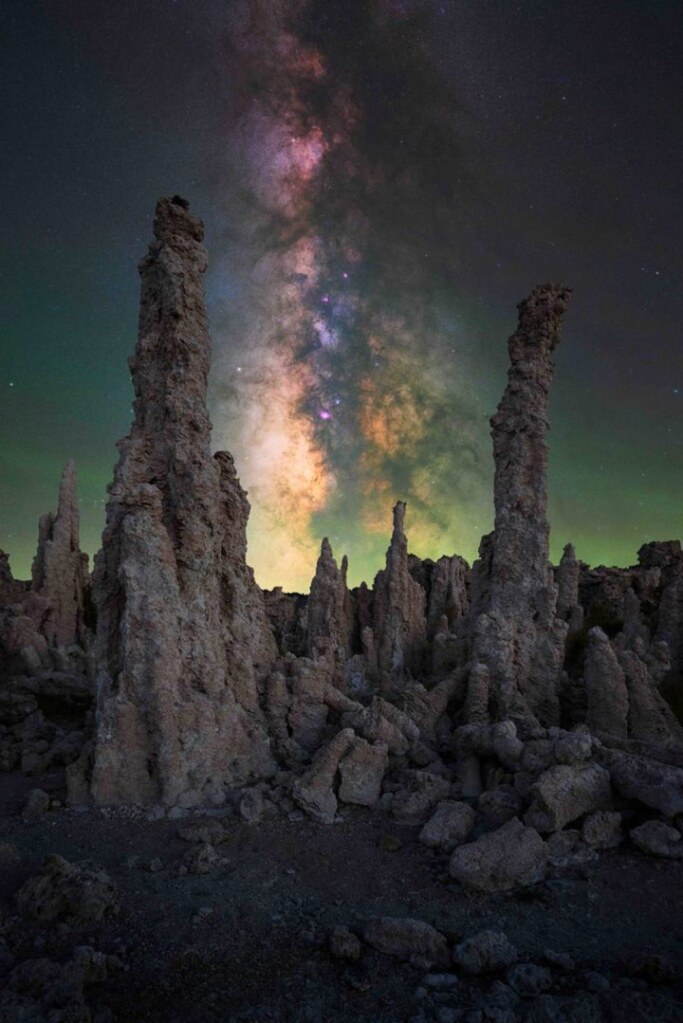
Nikon D810. Foreground: F/11, 30 seconds, ISO 100. Sky: (panorama) F/1.4, 4 minutes, ISO 200
‘These strange, cream-colored rock towers located near Mono Lake in California are called tufas,’ Marcin explains. ‘They formed when underwater springs that are rich in calcium mixed with the waters of the lake, which are rich in carbonates. The resulting reaction formed limestone. Over time, the buildup of limestone formed towers, and when the lake’s water level dropped, the towers became exposed.’
10. Celestial Shield, by Iván Ferrero

Astro-modified Sony A7 S, Sony A7R III. Foreground: F2.8, ISO 1600, 76 seconds, nine-photo panorama. Sky: 30 seconds, ISO 1600, F2.2, four-row panorama.
‘Taking advantage of a free night with clear skies, I embarked on a two-and-a-half-hour drive to reach Mironcillo in Spain, home to this castle perched at 4500 feet,’ says Iván. ‘Once it got dark, I captured a panoramic shot of the ground before tracking the milky way as Orion took its position.
Despite challenging weather conditions, with biting cold and strong winds, the sky cooperated. I kept the tripod low to prevent blurring and ensure stability.
Editing the sky involved individually stacking the 40 panels in Sequator (two shots per panel + 15 dark frames), blending the panorama using PTGui, and extracting information with Pix Insight. Finally, I merged the resulting sky with the ground panorama using Photoshop.’
To enjoy the full 25 image shortlist, see the Capture the Atlas website.
Further reading
Best cameras for astrophotography
How to photograph the moon
How to shoot star trails
Best photography competitions to enter in 2023

